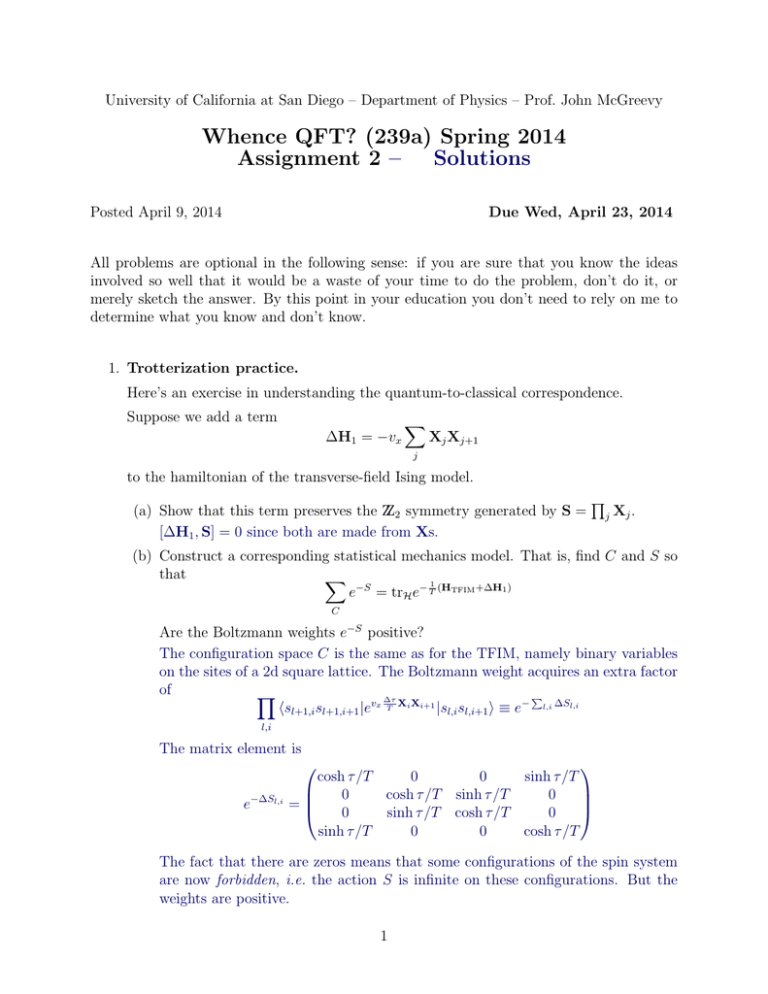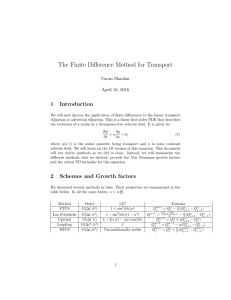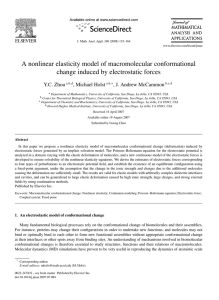Whence QFT? (239a) Spring 2014 Assignment 2 – Solutions
advertisement

University of California at San Diego – Department of Physics – Prof. John McGreevy Whence QFT? (239a) Spring 2014 Assignment 2 – Solutions Posted April 9, 2014 Due Wed, April 23, 2014 All problems are optional in the following sense: if you are sure that you know the ideas involved so well that it would be a waste of your time to do the problem, don’t do it, or merely sketch the answer. By this point in your education you don’t need to rely on me to determine what you know and don’t know. 1. Trotterization practice. Here’s an exercise in understanding the quantum-to-classical correspondence. Suppose we add a term ∆H1 = −vx X Xj Xj+1 j to the hamiltonian of the transverse-field Ising model. (a) Show that this term preserves the ZZ2 symmetry generated by S = [∆H1 , S] = 0 since both are made from Xs. Q j Xj . (b) Construct a corresponding statistical mechanics model. That is, find C and S so that X 1 e−S = trH e− T (HTFIM +∆H1 ) C Are the Boltzmann weights e−S positive? The configuration space C is the same as for the TFIM, namely binary variables on the sites of a 2d square lattice. The Boltzmann weight acquires an extra factor of Y P ∆τ hsl+1,i sl+1,i+1 |evx T Xi Xi+1 |sl,i sl,i+1 i ≡ e− l,i ∆Sl,i l,i The matrix element is e−∆Sl,i cosh τ /T 0 0 sinh τ /T 0 cosh τ /T sinh τ /T 0 = 0 sinh τ /T cosh τ /T 0 sinh τ /T 0 0 cosh τ /T The fact that there are zeros means that some configurations of the spin system are now forbidden, i.e. the action S is infinite on these configurations. But the weights are positive. 1 (c) Answer the previous two questions for ∆H2 = −vy X Yj Yj+1 . j Since XY = −YX, SYj Yj+1 = (−1)2 Yj Yj+1 S and so S is preserved, still. Using eV Yj Yj+1 = cosh V + Yj Yj+1 sinh V , (here V ≡ v∆τ ) we have hs0j s0j+1 |eV Yj Yj+1 |sj sj+1 i = δs,s0 cosh V − sj s0j sj+1 s0j+1 sinh V. 0 1 Here s1 ,s2 = . I haven’t found a simple expression for the logarithm −1 0 s1 ,s2 of this (the action of the stat mech model), but certainly these are not positive Boltzmann weights. (d) Answer the previous two questions for ∆H3 = −gy X Yj . j This breaks S. Using eV Yj = cosh V + Yj sinh V , the Boltzmann weights now acquire factors of i. 2








